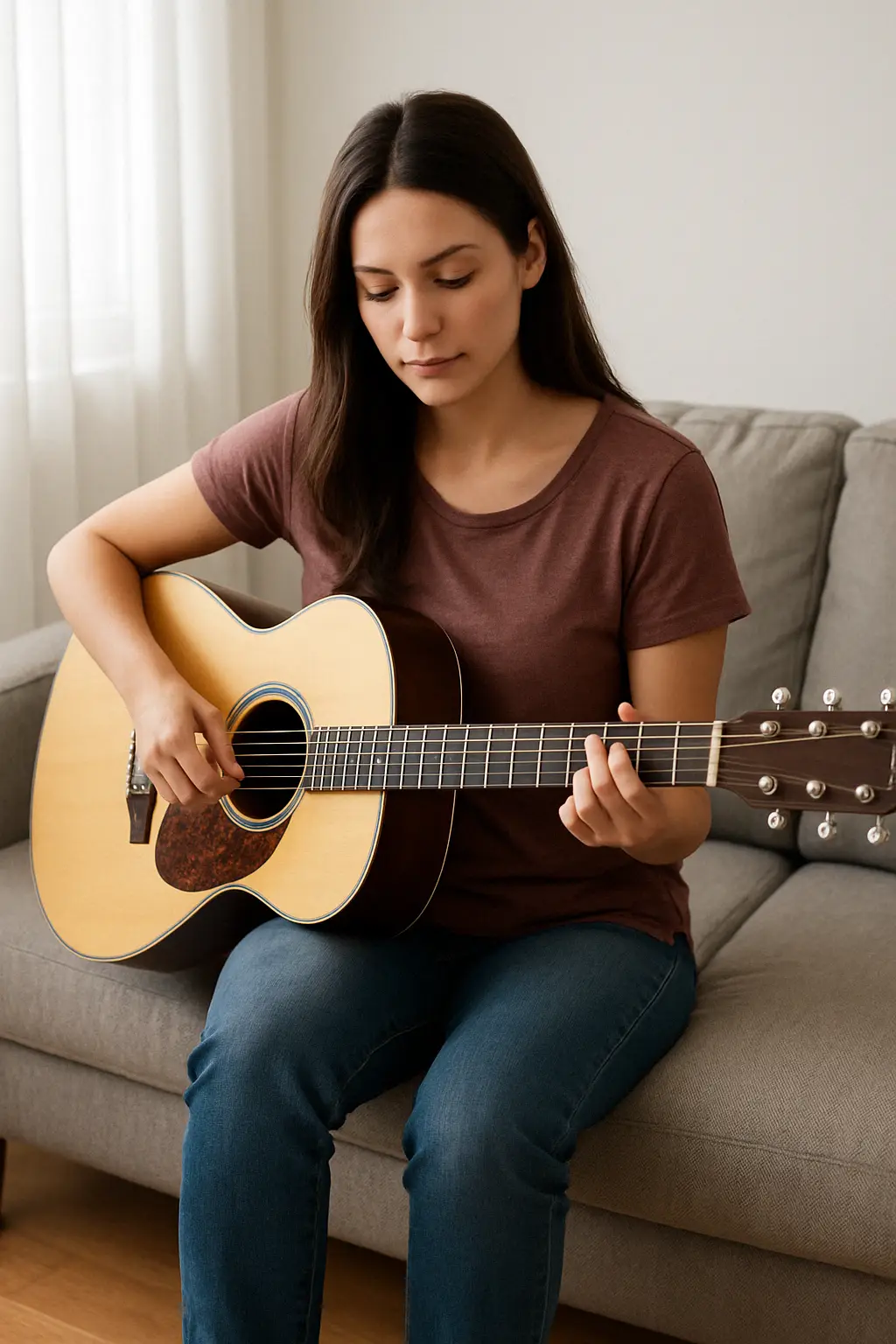Guitar Posture - How to Sit and Stand for Comfortable Playing

2025-04-17
When you start learning guitar, it’s tempting to focus all your energy on chords and strumming. But there’s one foundational element that gets overlooked by many beginners—posture. Good posture not only makes playing more comfortable, but also improves accuracy, reduces fatigue, and helps prevent injury.
Why Posture Matters
Playing guitar is a physical activity, and like any physical skill, your technique is built on how you hold and move your body. Slouching or poor alignment leads to unnecessary tension, strain on your back and wrists, and a slower learning curve. In contrast, good posture sets you up for endurance, precision, and expression.
The Two Most Common Playing Positions
There are two main ways to hold your guitar: sitting and standing. Both require proper form, and both can cause problems if not done right. Let’s break each one down.
1. Sitting Position (Classical or Casual)
This is how most beginners start. Sit in a chair without armrests so your arms can move freely. There are two main sitting styles:
- Casual Position: The guitar rests on your strumming-side leg (right leg for right-handed players). This is more relaxed but can lead to slouching if you're not careful.
- Classical Position: The guitar rests on your opposite leg (left leg for right-handed players), with the neck angled slightly upward. You may prop your foot up on a small footstool. This encourages better alignment and control.
Whichever position you choose, your back should be straight but relaxed, and both feet should be flat on the floor (or one on a footrest). Avoid leaning over the guitar too much—it’s okay to glance at your hands, but keep your neck long and shoulders down.
2. Standing Position
Standing posture is especially important for electric players or those who want to perform. Use a strap to hold the guitar securely against your body.
- Adjust the strap so the guitar sits at the same height as when you're seated. Too low looks cool but strains your wrist and makes clean playing harder.
- Keep your shoulders relaxed and the neck of the guitar angled slightly upward.
- Use your fretting hand to play, not to support the neck.
Try practicing both sitting and standing so you're comfortable in each. The better your posture, the more confident and free your playing will feel.
Common Posture Mistakes
- Slouching: It might feel natural to hunch over to see the fretboard, but it leads to back and neck pain.
- Neck too low: If the guitar neck is angled downward, it forces awkward wrist and arm angles. Keep it slightly upward instead.
- Guitar sliding around: If the body of the guitar isn’t secure, it’ll shift as you play. Use your forearm to gently anchor it or adjust your strap accordingly.
- Elbow floating too far out: Your strumming or picking elbow should rest lightly on the top edge of the guitar. If it’s flaring out too far, you’ll lose control and tire faster.
Tips to Improve Your Posture
- Use a mirror or record yourself: It’s hard to tell if you’re slouching without seeing it. Use visual feedback to correct your form.
- Take breaks: Every 15–20 minutes, stand up, stretch, and shake out your arms. Even great posture can cause fatigue if held too long without movement.
- Use a footstool or strap even while sitting: Especially useful if your guitar slips around or your back starts hurting.
- Do shoulder rolls before practice: A quick warmup to loosen up tension can reset your posture and reduce stiffness.
Ergonomics for Long-Term Health
If you plan to play regularly, your body will thank you for learning ergonomic habits early. You’ll reduce the risk of repetitive strain injuries like tendonitis or carpal tunnel syndrome. Plus, when your body feels good, your mind stays clearer and more focused on the music.
Final Thoughts: Build a Strong Foundation
Great technique doesn’t come from your fingers alone—it starts with how you sit or stand. Make posture part of your daily practice routine and check in with your body as you go. Over time, you’ll notice better control, cleaner tone, and a more enjoyable playing experience.
Looking for more beginner guidance?
Be sure to check out our Guide to Guitar Parts or How to Tune Your Guitar to round out your fundamentals.